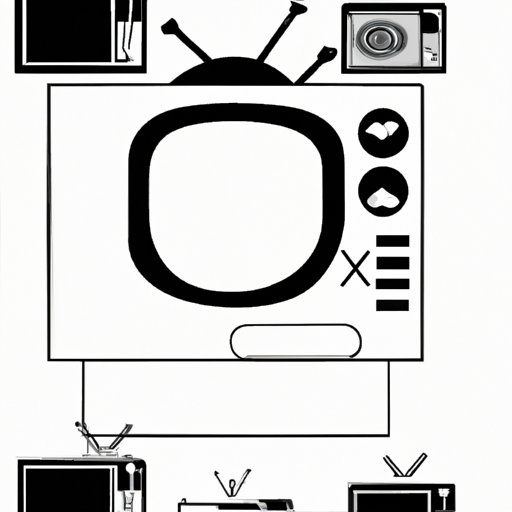Introduction
Television has revolutionized the way we view the world. From its early days as a bulky experiment in a laboratory to the sleek, modern entertainment device found in nearly every home today, television has come a long way. This article explores the invention of television for use in homes, providing a historical overview of the evolution of television from its inception to its use in homes and examining how it has impacted society and culture.
Historical Overview of the Invention of Television for Home Use
Before the invention of television, people relied on the radio, newspapers, and books for news and entertainment. The invention of television changed all this. Although the idea of television had been around since the late 1800s, it wasn’t until the 1920s that experiments began to take place. In 1927, Philo Farnsworth transmitted the first electronic images over a distance and went on to develop the first functional television system.
In the 1930s, television became increasingly popular. The BBC launched the world’s first regular television service in 1936, and more TV stations followed. By 1939, there were around 10,000 TV sets in the U.S., although most of these were used in public places like bars and restaurants. It wasn’t until after World War II that television began to be used in homes.
The 1950s saw an explosion in the popularity of television. Sets became smaller, cheaper, and more widely available. Families gathered around the television to watch their favorite shows, and TV quickly became an integral part of everyday life. By 1960, nearly all households in the U.S. had a television set.

How Television Changed Our Lives: Examining the Invention of Home TV
The invention of television for use in homes had a profound impact on society and culture. It brought people together, allowing them to share experiences and sparking conversations about topics that would have otherwise gone undiscussed. TV also allowed people to experience events from around the world in real time, such as the moon landing in 1969. According to a survey by the American Time Use Survey, Americans spend an average of 2 hours and 48 minutes watching TV every day.
The invention of television for use in homes was made possible by a number of pioneers, including Philo Farnsworth, Vladimir Zworykin, and John Logie Baird. These individuals had a vision of a world where people could access information and entertainment from the comfort of their own homes. Without their contributions, television as we know it today would not exist.

A Timeline of the Development of the Home Television
Here is a timeline of key milestones in the invention of television for home use:
- 1927: Philo Farnsworth transmits the first electronic images over a distance.
- 1936: The BBC launches the world’s first regular television service.
- 1939: There are around 10,000 TV sets in the U.S., although most are used in public places.
- 1950s: Television becomes increasingly popular, with sets becoming smaller, cheaper, and more widely available.
- 1960: Nearly all households in the U.S. have a television set.
- 1969: The moon landing is broadcast live on television.
Conclusion
The invention of television for use in homes has had a significant impact on society and culture. From its early experiments in the 1920s to its widespread use in homes today, television has changed the way we view the world. Pioneers such as Philo Farnsworth, Vladimir Zworykin, and John Logie Baird made the invention of television for home use possible. This timeline highlights some of the key milestones in the development of the home television.
Today, television remains a powerful tool for entertainment, education, and communication. Although it has evolved greatly over the years, the basic concept of television remains the same: to bring people together and to provide them with access to information and entertainment from the comfort of their own homes.
(Note: Is this article not meeting your expectations? Do you have knowledge or insights to share? Unlock new opportunities and expand your reach by joining our authors team. Click Registration to join us and share your expertise with our readers.)
